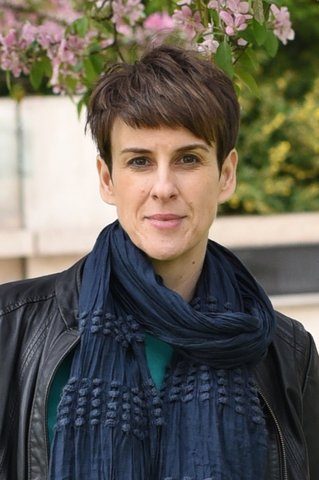Years of Disarray 1908-1928 at Olomouc Museum of Art
Years of Disarray 1908-1928. Avant-gardes in Central Europe, Olomouc Museum of Art, Olomouc (CZ), September 21, 2018–January 27, 2019
Among the proliferation of First World War related exhibitions of recent years, several have been devoted to the historical avant-garde, a label attached to numerous artistic movements that formed before and during the war. (This review was written as a part of the research project of the Petőfi Literary Museum–Kassák Museum under a grant from the National Office of Research, Development and Innovation, Project-No. NKFIH, K-120779, “The Avant-Garde Periodicals of Lajos Kassák from an Interdisciplinary Perspective (1915–1928).”) The travelling exhibition Years of Disarray marks the centenary of the Austro-Hungarian Monarchy’s break up by focusing on the avant-garde art movements of the Central European region.(The exhibition was held for the European Year of Cultural Heritage 2018, connected to the 100th anniversary of the end of the First World War.). The project, funded by the International Visegrad Fund and the cultural ministries of the four Central European countries involved (Czech Republic, Poland, Slovakia, and Hungary), opened at the Olomouc Museum of Art and progresses in 2019 and 2020 to the International Cultural Centre, Kraków, Bratislava City Gallery, and Janus Pannonius Museum, Pécs(Muzeum umění, Olomouc, September 21, 2018 – January 27, 2019; Międzynarodowe centrum kultury, Kraków, March 8 – June 9, 2019; Galéria mesta Bratislavy, Bratislava, June 27 – October 27, 2019; Janus Pannonius Museum, Pécs, November 29, 2019 – April 1, 2020.) A specialist curatorial team recruited from the participating countries joined the exhibition’s creators, Karel Srp and Lenka Bydžovská, forming a truly Central European collaboration.(Zsófia Kiss-Szemán (Slovakia), Monika Rydiger (Poland), György Várkonyi (Hungary), Steffen Eigl (Germany), and Erwin Kessler (Romania).)
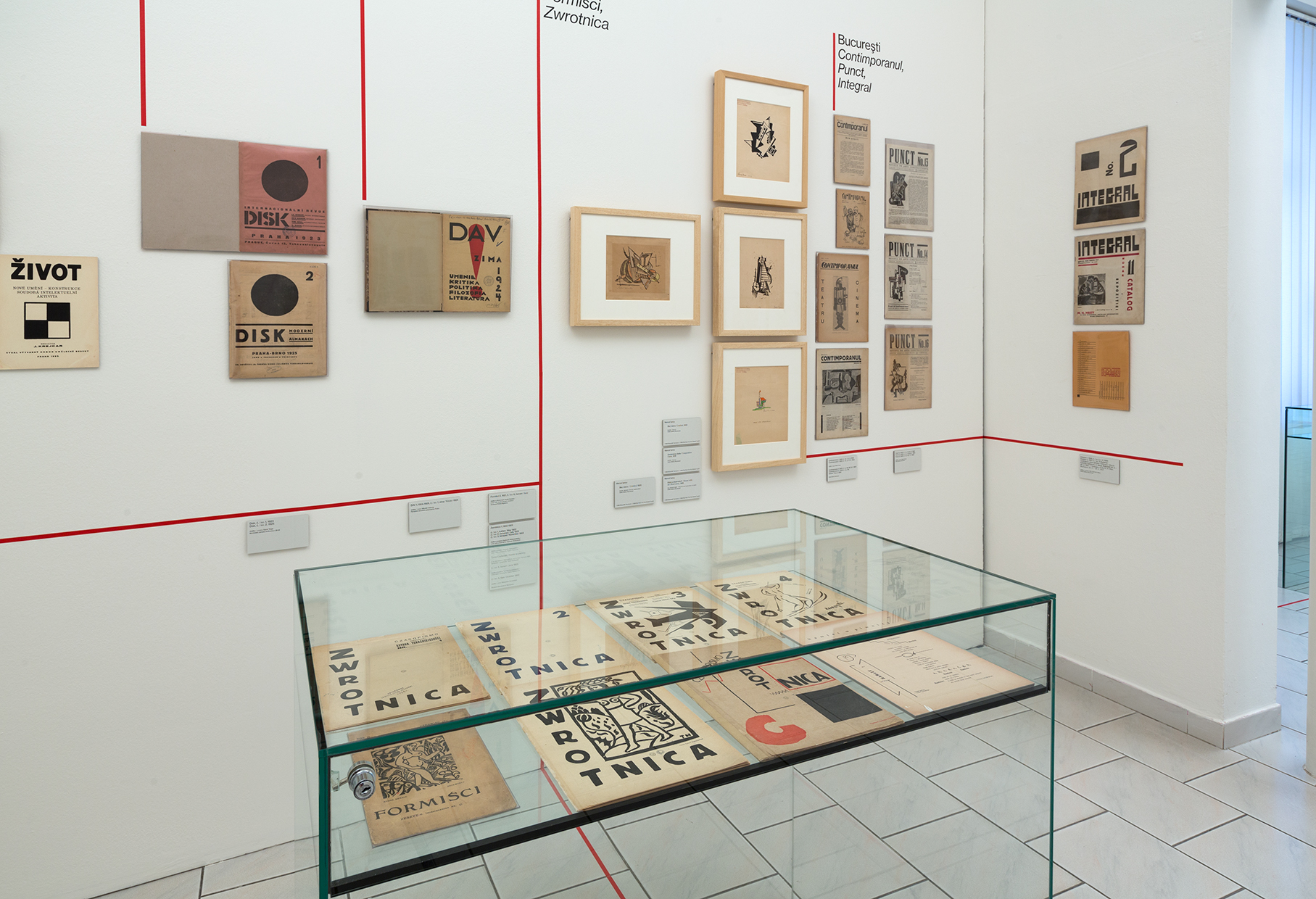
Years of Disarray. View of the Olomouc exhibition. Photo: (c) 2018–2019. Image courtesy of Olomouc Museum of Art.
This regional perspective yielded an exhibition that emphasizes the special features and self-image of Central European cultures. The first host and the originator of the project, the Olomouc Museum of Art, also takes regionality as the guiding theme for its permanent exhibition and collection strategy, a rare phenomenon in Central Europe(The museum’s permanent twentieth-century exhibition includes work from artists throughout the Central and Eastern European region as well as Czech artists, grouped, as is the present exhibition, by transnational themes. For more on this, see the museum’s website: http://www.muo.cz/en/permanent-exhibition/a-century-of-relativity–16/. The museum also runs the constantly expanding Central European Art Database, aimed at comprehensive coverage of Central European art of the period since the Second World War. The database is accessible at http://www.cead.space.) A comprehensive catalog of the exhibition with essays by major international experts on the Central European avant-garde is due for publication in this year.
The exhibition will be largely the same at all four venues, but the title shows some variations in its Czech, Polish, Slovakian, Hungarian, and English versions. The Hungarian title Törésvonalak (Fault Lines) alludes to the borders of the Habsburg Empire’s successor states following its break-up, while the Czech, Slovak, and Polish titles—Rozlomená doba, Czas przełomu (Fragmented Times)—foreground the fragmentation of the period. The English translation—Years of Disarray—slightly shifts the emphasis to the confusion of the First World War and the interwar period, a puzzling choice of words since there is very little reference to this circumstance in the exhibition itself. The variation among the titles may also reflect each venue’s reinterpretation of the exhibition’s central concept and the divergent attitudes about the dissemination of the Habsburg Empire in different Central European countries. By referring to the loss of the two third of the territories of the historical Kingdom of Hungary in 1920, the Hungarian title refers more to a new geographical area with new borders than to a continuous era, as in the case of other Visegrad partners.
The Olomouc exhibition presents a comprehensive and prestigious review of the Central European avant-garde and addresses the question of how the artistic revolution of the 1910s and 1920s meshed with the political and social changes going on at the same time. The changes undergone by the visual arts in that period are presented in twelve thematic units, an arrangement with the fortunate effect of dissolving national contexts and borders. The curators’ central assertion is that avant-garde artists between 1908 and 1928 generated connections across changing political boundaries, and this transnational thinking resulted in remarkable stylistic and thematic affinities. At the end of the exhibition, however, the viewer is left wondering what part in the thematic selection was played by regional considerations.
The traditional mediums of painting, drawings and prints, and sculpture feature most prominently in the exhibition. They are complemented by the new media favored by avant-garde artists: magazines, photography, film, and poster art. In the traditional media, the curators’ selection embraces the work of nearly 100 artists, including many lesser-known masterpieces that have never previously appeared in exhibitions of the avant-garde. This part of the exhibition also makes chronological divisions within the thematic groupings. The first theme, The Solitary Self, presents Cubist- and Expressionist-influenced self-portraits of the modernist and early avant-garde generations beginning at the turn of the twentieth century. It explores the positions that artists took up as they contended with established art and popular taste throughout Central Europe. The artistic revolutions of the five years that led up to the First World War appear in the exhibition in three units defined by thematic affinity. The Arcadia Theme section displays the Cézanne-like paintings of bathing nudes much favored by the early avant-garde, both in Western and Central Europe.
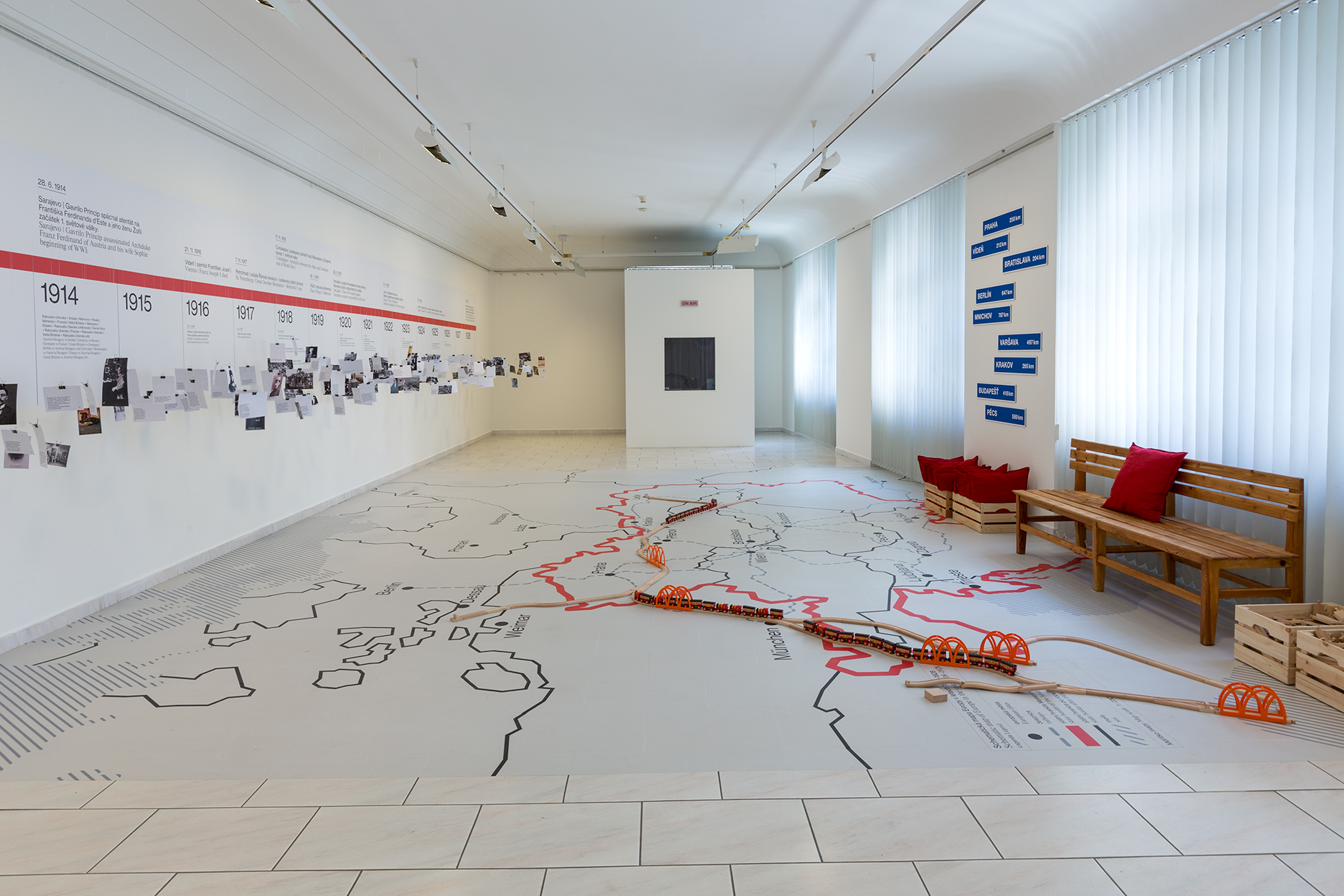
Years of Disarray. View of the Olomouc exhibition. Photo: (c) 2018–2019. Image Courtesy of Olomouc Museum of Art.
Works that drew their inspiration, among others, from the pessimistic philosophy of Schopenhauer and the realist novels of Dostoyevsky present the literary and philosophical inclinations of early Expressionism. Central European Cubism appears in landscapes and still-lifes made in the first half of the 1910s, with work by Czech, Slovak, Austrian, Hungarian, and Polish artists appearing side by side. Particularly interesting is the section on the artistic expression of direct experiences in the First World War, juxtaposing battlefield sketches with expressionist visions made after the war, such as the large canvases by the Košice artist Anton Jasusch.
In the decade following the devastation of the First World War, the programs of the avant-garde artists, who by then were living in the successor states of the Habsburg Empire, were defined by the search for new beginnings and the hope for a completely new world. The curators have divided these Constructivist and utopian programs into four sections. The section People, Cities, Machines embraces work by artists who identified with the postwar constructive-geometric aesthetic. Here, the focus has been on positions where faith in technological progress was accompanied by a demand for depictions of the contemporary urban environment as city views. One section explores the new relations between man and machine and between town dwellers and the new urban fabric; another addresses the utopian experiments that conceived of the rebuilding of the world in terms of total abstraction.
Many Central European artists in the first half of the 1920s put their faith in a program that linked social change with constructivist abstraction, as we see in the exhibition of work by Lajos Kassák, László Moholy-Nagy, František Kupka, Katarzyna Kobro, and Władysław Strzemiński. Other routes to social reform appear in the People of the Sun section where the curators have selected among visions of the “new man,” which in the 1920s took on extremely diverse forms. For some, the future of society meant a radical new humanism; for others, it meant robotization. Human-centered approaches are present in, for example, the graphic works of Jenő Krón and pictures by the Vienna Kinetist group, My Ullmann and Erika Giovanna Klien. There is also a separate section devoted to Karel Čapek’s highly influential drama R. U. R.in which the “new Adam” and “new Eve” appear as robots. The visual arts sections end with Surrealism, the works of Władysław Strzemiński, Josef Šíma, Jindřich Štyrský, and Toyen, who took a biocentric worldview that contrasted with the constructive and analytic approaches.
The next part of the exhibition, covering magazines, photography, and film, complements the traditional visual arts material with an extensive selection that illuminates the same topics from a different angle. Thanks to the relatively new mediums of photography, film as well as to the renewal of international artistic communication through magazines after the First World War, cultural communication became more dynamized. In the first half of the 1920s, magazines, which could be produced quickly and relatively cheaply, were excellently suited to serve as channels of communication, allowing various Central European avant-garde groups to establish contact with each other. Magazines and other publications also provided possibilities for artists’ ventures into literary and typographical experimentation.
The exhibition highlights the diversity of Central European avant-garde publications, showing journals Pásmoand ReDof the Czech Devětsil group, Zenitof Yugoslavia, Main its Viennese phase, Blokof Poland, and Contimporanulof Romania. In addition to the media of photography, photomontage, and film that were so important to Bauhaus-associated artists like Moholy-Nagy and young artists such as Karel Teige who entered the fray in the 1920s, the exhibition showcases the practical applications that grew out of experimental avant-garde art, an outstanding example being Sándor Bortnyik’s series of cigarette-paper posters for the company Modiano from the late 1920s.
Finally, the temporal and spatial relationships between subject matter in the exhibition is displayed on a timeline, accompanied by a map, laid out on the floor of the very first hall. The exhibition thus consists of three physically separate units: artworks in the classic sense, the avant-garde application of new media, and a space devoted to the political and cultural context. The fusion of these three units, coupled with the recurring visual motif of the thick, red-colored fragments of the post-1920 Central European national boundaries that appears throughout the exhibition and serves as its logo, clarifies the exhibition’s title Years of Disarray. Due to the rapid scale of modernisation as well as to important political changes—from the fall of empires to a change of power, ambivalent democratization, etc.—in the region, uncertainty and anxiety rose in both artistic and social issues.
This interpretation of the exhibition’s underlying concept, however, brings up several questions and inspires some critical reflections. We see from the timeline that 1918 stands exactly halfway through the twenty-year period examined by the show. Until that point, the revolutions in art were related to the concurrent social revolutions, but between 1918 and 1928, the linkage of art with society was not conceived in revolutionary terms. Yet the curators have designated political events to mark the start and end points of their period: the Slavophile congress in Prague in 1908 and the Kellogg-Briand Pact, involving the demilitarization of international conflict management, in 1928. Although we might ask whether artistic events can really be aligned with events of political history, the chronological table the curators have provided in the exhibition guide leaves no doubt about the artistic importance of the dates chosen as the start and end points.(Years of Disarray 1908–1928: Avant-Gardes in Central Europe. Guide. Olomouc: Muzeum uměni Olomouc, 2018, pp. 193 and 199.)
As is evident from the large map mounted on the exhibition-room floor, the exhibition defines Central Europe as a group of countries that shared the cultural heritage of the Habsburg Empire, the borders of which stretched from Kraków to Novi Sad and Trieste, and from Lemberg (now Lviv) to Prague(For more on this approach, see Catherine Horel, Cette Europe qu’on dit centrale. Des Habsbourg à l’intégration européenne (1815–2004)(Paris: Beauchesne, 2009).) In line with this conception, the countries directly involved in the project—Czech Republic, Slovakia, Poland, and Hungary—are placed alongside Austria, Serbia, Croatia, Slovenia, Romania, and Germany. The Central European regional perspective is particularly suited to research into avant-garde art, which was the first artistic movement to challenge the hierarchical system of center (the West) and periphery (the East) and the significance of the great Western artistic centers, above all of Paris. With its transnational perspective, the avant-garde was able to relativize the geopolitical realities defined by the new postwar alliances: the avant-garde networks diverged from existing European, and particularly Central European, patterns of political and economic cooperation. Avant-garde currents operated by the logic of their own system of contacts and paid no heed to the hierarchical political and economic regions and countries of Europe. Because of this, and the international contacts they generated, the avant-garde movements were eventually marginalized within national cultures between the two world wars.(The social embeddedness and socially formative significance of modernism has been examined by, for example, a 2015 exhibition in the Prague National Gallery and the associated catalog: Milena Bartlová and Jindřich Vybíral (eds.), Budování státu: Reprezentace Československa v umění, architektuře a designu / Building a State: The Representation of Czechoslovakia in Art, Architecture and Design(Prague: UMPRUM, 2015).)
The cultural self-interpretation of Central Europe can benefit substantially from transnational and comparative studies of Central European avant-garde art and the elucidation of how artistic programs of the 1910s and 1920s made connections that transcended national contexts. By placing the regional approach at center stage, the exhibition illuminates the possibility of creating a common regional social memory, an alternative to the dialog-stifling rival memorial politics that still persist today. The project itself—and this is one of its greatest merits—is a regional venture: instead of Western curators selecting the works and drawing up the concept, the project was based on cooperation among Central European art historians, promising the inclusion of new points of view. Much of the selection, however, was made according to a consolidated canon, and the newly selected, lesser-known works only provide some additional texture. Stylistic and formal questions have provided most of the criteria for compiling the sections, and the exhibition makes no proposals for contextualizing narratives based on new analyses.
When considering future research and exhibition practice, broad-based investigations of Central European avant-garde art should pay heed to two major principles. First, art historical enquiries are not enough in themselves to enable the relationships between avant-garde art and social developments to be investigated in all their complexity. The interpretation has to include findings by disciplines outside art history. Second, we must shake off the canonical, hierarchical, Western-centric discourse that is a remnant of the bipolar Cold War world and develop new narratives capable of accurately conveying the distinctive features of art in the Central (and Eastern) European region(The contemporary academic discourse frequently defines the region as Central and Eastern Europe, with a view to the historical changes of the twentieth century. For more on this, see Jenő Szűcs, “The Three Historical Regions of Europe: An Outline,” Acta Historica Academiae Scientiarum Hungaricae Volume 29, Number 2–4, 1983, pp. 131–184.On the 1920s concept of Central Europe and the transnational relationships of avant-garde art, see Hubert van den Berg, “Lajos Kassák, the Viennese Edition of MA and the “International” of Avant-Garde Journals in the 1920s,” in Art in Action – Lajos Kassák’s Avant-Garde Journals from A Tett to Dokumentum (1915–1927),Eszter Balázs, Edit Sasvári and Merse Pál Szeredi, eds. (Budapest: Petőfi Literary Museum–Kassák Museum, 2017), pp. 9–32.)
This complex regional approach must therefore be linked up to current methodological discourses as well, because its subject lies beyond the grasp of formalist criticism.In recent decades, the academic discourse on avant-garde art has made significant progress towards outlining a decentralized theoretical framework of the “Close Other” as the basis for treating the art history of the Central and East European region(On the term “Close Other,” see Piotr Piotrowski, “Toward a Horizontal History of the European Avant-Garde”, in Europa! Europa? The Avant-Garde, Modernism and the Fate of a Continent, Sascha Bru et. al., eds. (Berlin: De Gruyter, 2009), pp. 49–58, here pp. 52–53. For an overview, see Per Bäckström and Benedikt Hjartarson (eds.), Decentering the Avant-Garde(Amsterdam–New York: Rodopi, 2014); Beáta Hock and Anu Allas (eds.), Globalizing East European Art Histories: Past and Present(New York: Routledge, 2018).) The question has been addressed in detail by the Polish art historian Piotr Piotrowski, who has attempted to replace the “vertical,” hierarchical approach based on the Western canon with a “horizontal,” coordinated art historical discourse.(Piotr Piotrowski, In the Shadow of Yalta. Art and the Avant-Garde in Eastern Europe, 1945–1989(London: Reaktion Books, 2009).)
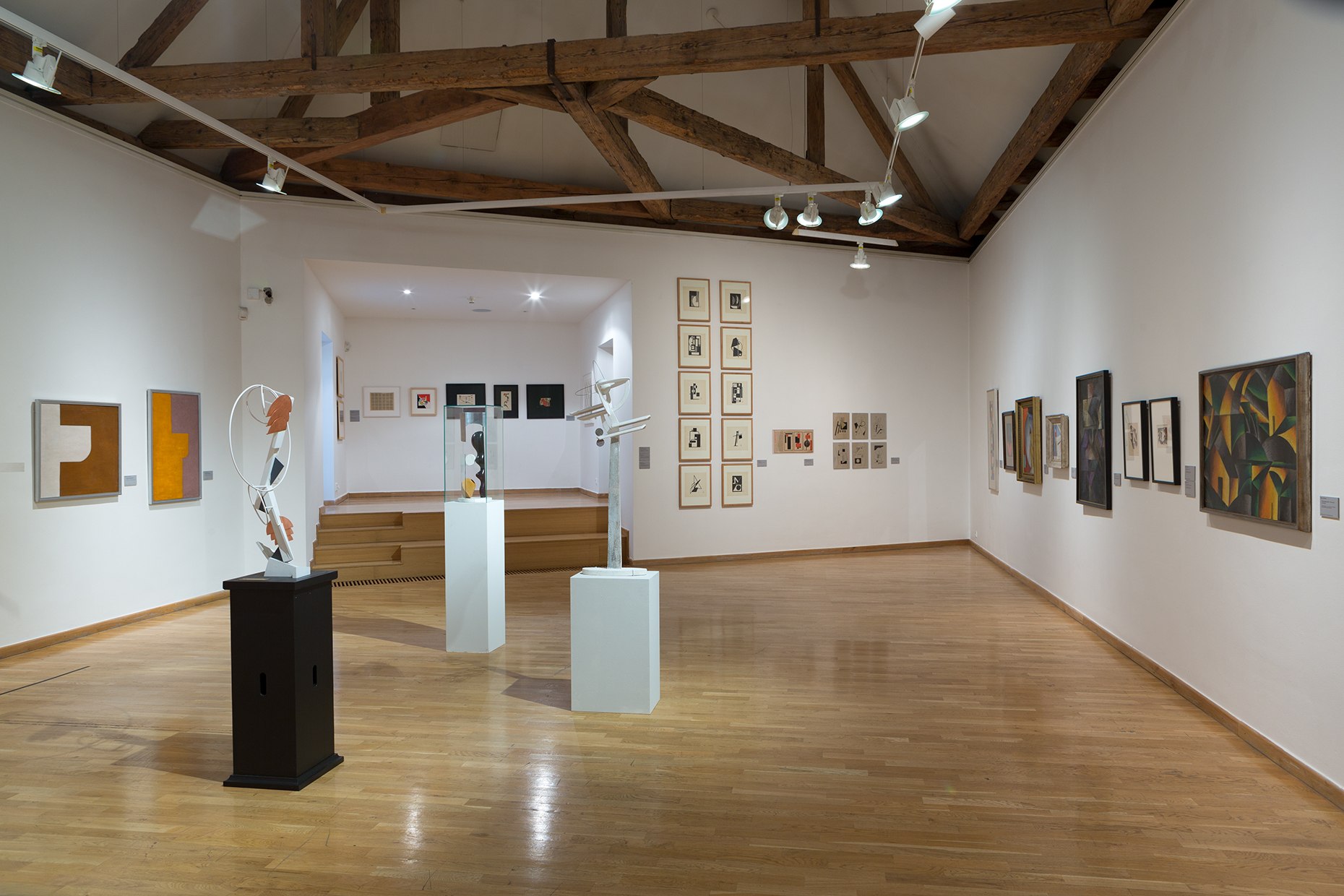
Years of Disarray. View of the Olomouc exhibition. Photo: (c) 2018–2019. Image Courtesy of Olomouc Museum of Art.
These approaches are evident in exhibitions of Central European avant-garde art, presented during the past two decades. A large-scale exhibition entitled Central European Avant-Gardes: Exchange and Transformation, shown in Munich, Berlin, and Los Angeles in 2002, for example, approached the question from the regional artistic centers that had previously been treated as peripheries. The Centre Pompidou’s 2013 exhibition Modernités plurielles fitted the Central European avant-garde into the global narrative of “multiple modernities;” and in its 2016 exhibition Formkunst, the Belvedere in Vienna framed regional avant-garde ventures with social concepts like the similarities and differences in art education at the turn of the century.(Timothy O. Benson, (ed.), Central European Avant-Gardes: Exchange and Transformation, 1910–1930(Los Angeles, Cambridge, Mass: Los Angeles County Museum of Art and MIT Press, 2002); Catherine Grenier, (ed.), Multiple Modernities 1905–1970(Paris: Centre Georges Pompidou, 2013); Agnes Husslein-Arco and Alexander Klee (eds.), Klimt, Kupka, Picasso. Kubismus – Konstruktivismus – Formkunst(Vienna: Hirmer, 2016).) For the 1918 centenary, the “horizontal” approach has inspired an exhibition in Vienna and Brussels, Beyond Klimt: New Horizons in Central Europe. Like the Olomouc show, this exhibition presents the interwar art of countries that share the Habsburg cultural heritage, but it looks at a wider range of “modernisms” rather than focusing exclusively on the avant-garde or stylistic similarities. It aims to show the new system of relationships that grew out of this regional cultural heritage, relationships that, despite formal differences, generated similar approaches among artists.(Stella Rollig and Alexander Klee (eds.), Beyond Klimt: New Horizons in Central Europe(Vienna: Hirmer, 2018).)
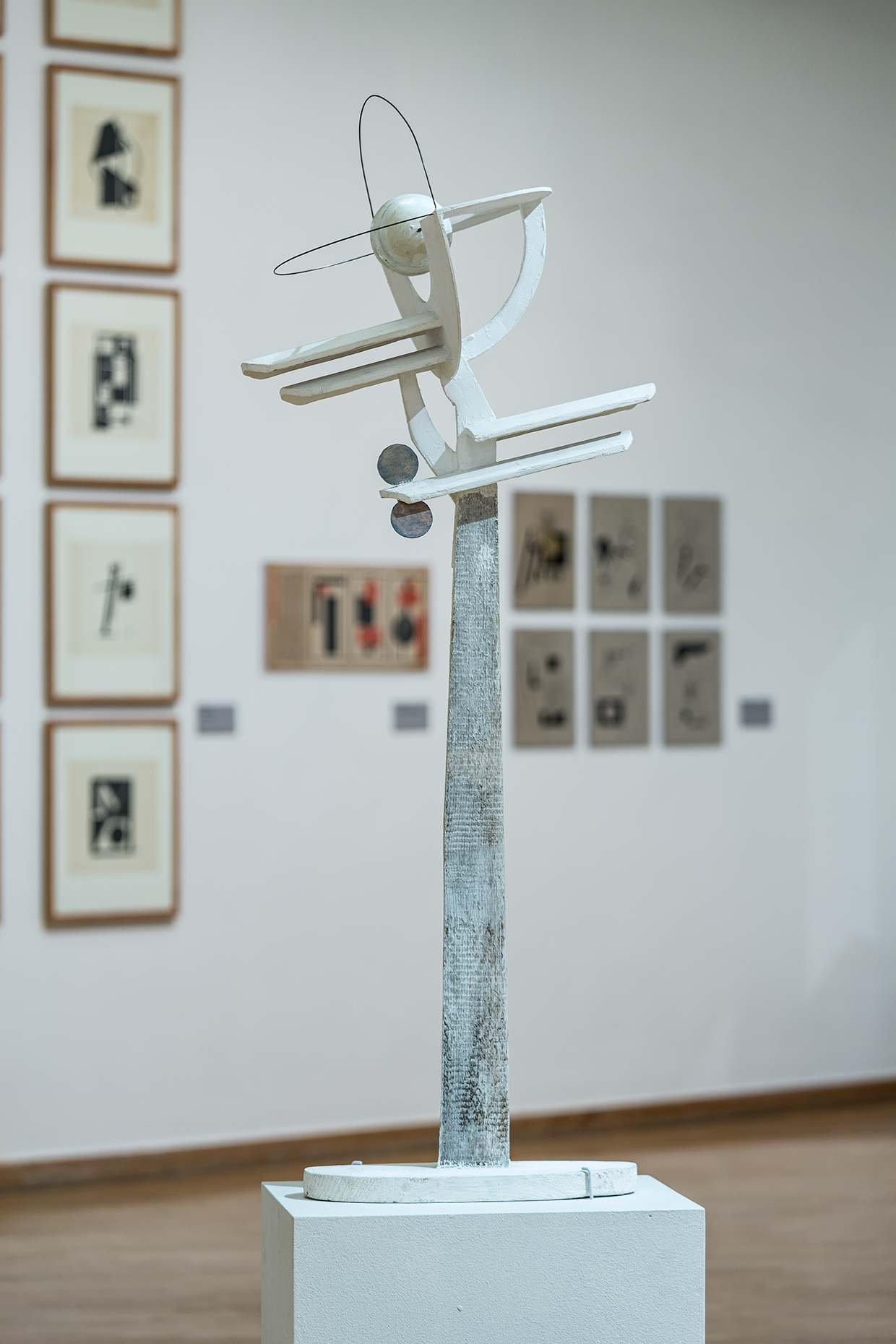
Years of Disarray. View of the Olomouc exhibition. Photo: (c) 2018–2019. Image Courtesy of Olomouc Museum of Art.
In its present form, the exhibition Years of Disarray elicits more questions than it answers. What connections and specific intellectual and physical exchanges caused the avant-garde artists of the region to tune in on the same wavelength? How was it that citizens of successor states that had come out of World War I as losersproposed similar themes and subjects, and with similar sensitivity, as citizens of the successor states associated with the victors? What influences were these artists exposed to from Western painting? If there were differences or similarities among them, what did these spring from? What was the role of women artists in the avant-garde? How were the correspondences and differences among the artists of different nations of the Austro-Hungarian Monarchy articulated before and after the war? Were they touched in any way by Central European identity—which featured very strongly at the time? Were they members of the same groups and networks? How can the attitude and artistic paradigm of the avant-garde be analyzed through specific works? What part did this attitude play in the revolutions of 1918 and 1919? How can this period (1908–1928) be better dissected and refined?
The wall text in each room offers viewers no more than a brief commentary on the thematic selection, but the exhibition’s pocket guide takes up the question of context in more depth and gives a better impression of the complex interconnections. Without this guide, visitors can only look at the twelve rooms full of frequently little-known artworks arranged by medium and theme. This, of course, is a lot in itself. Hopefully, the forthcoming catalog will reveal more about the concept of this large-scale exhibition of the Central European avant-garde. Years of Disarray is an ambitious and outstanding venture in researching and communicating the history of the Central European avant-garde. We are unlikely anytime soon to have another opportunity to see an exhibition of such magnitude with such a rich array of works.
Translated by Alan Campbell
International Cultural Center, Cracow (PL), March 8, 2019-June 9, 2019
Bratislava City Gallery, Bratislava (SK), June 27, 2019-October 27, 2019
Janus Pannonius Museum, Pécs (HU), November 29, 2019-April 1, 2020

